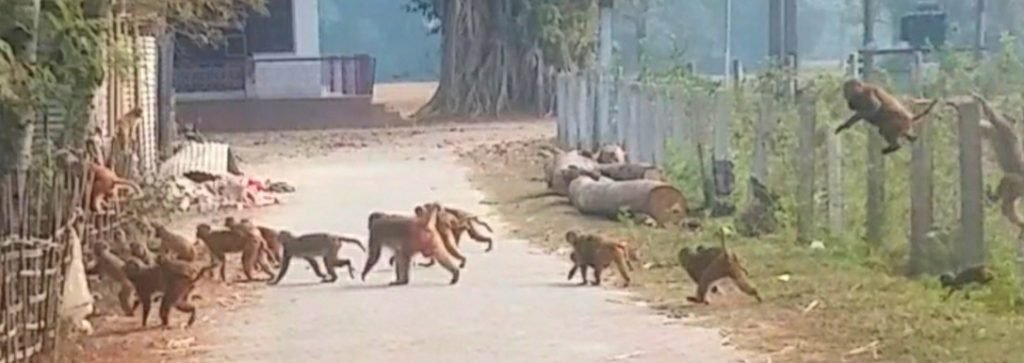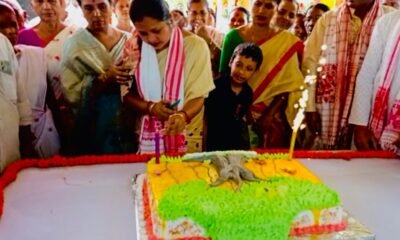Animal
Monkey and Squirrel posing serious threat to the farmers

With the increase of population of Monkey and Squirrels in the newly formed Bajali district the farmers here left no option to cultivate in the locality.Most of the farmers stopped cultivation in their field.
The production of Coconut and Betel nut is decreasing in the alarming rate and hence the farmers have to suffer a lot.
The area is once known for the production of Coconut and Betel nut and it was a status symbol for the people of the locality but due to the increase of the population of squirrel and monkey the status symbol turns to be history for the people of the area.
The Monkey group contains approximately 100 to 200 monkey’s moves around the area and destroy everything and even the Monkey enters kitchen and destroy the food items of the inhabitant of the area.
The Monkey also destroy roof of the residential houses as big sized monkey jump again and again.
Lastly in many places people also injure in the attack by Monkey. There is no option for the people to control the situation. Some people burst cracker and pelt stone but in Vain.
The people from time to time demanding initiatives from the concern department to get rid of the menace but all are in vain.
Earlier the Monkey were limited in the area and it was specially in the Northern part of National Highway like Nityananda, Barbang, Choudhury para, kenduguri, Kaharpara, Choukhuty, Muguria etc. But from last few years it spread into the Southern part of the National Highway and the affected villages were Barbhaluki, Kanimara, Balipara, Kochdiga, Dharamtal, Nizsariha, Jalikhata etc.
People of the locality urged the authority concern to take adequate step so that they may be get rid of the menace.
For more stories follow our page Times of Northeast on Facebook Visit our website https://timesofnortheast.com
Times of Northeast is an independent digital news portal which seeks to grab the attention of rational-minded people from Northeast India.


















